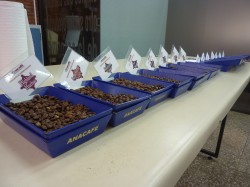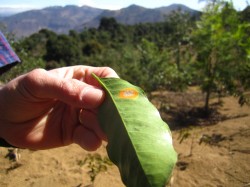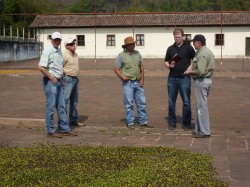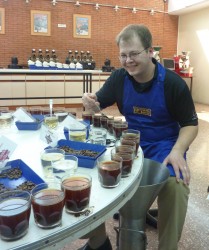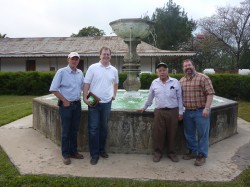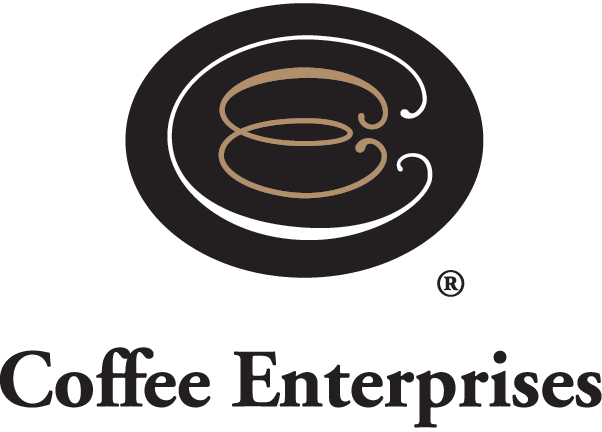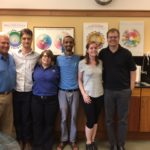A Rainbow of Choices: Coffee Analysts goes to Guatemala
After making it through another brutal New England winter, we decided to it was time to head to origin: this time, to Guatemala. Working closely with Anacafe, the Guatemalan National Coffee Association, we studied coffee quality throughout the country, and learned first hand about the destructive nature of leaf rust (hemileia vastatrix.)
Upon arrival we began working in Anacafe’s labs, comparing operating procedures for green and roasted coffee to ensure consistency and accuracy of methods in our respective labs. Next, we completed cuppings that explored the different quality designations found in Guatemala (Prime, Extra Prime, Semi Hard, Hard, and Strictly Hard Bean); also on the table was a natural coffee and Robusta, two types that are very limited in Guatemala. Subsequent cuppings compared the eight distinct regions of coffee, which include designations based on cup profile, climate, soil, and altitude. Not surprisingly, there are pretty clear distinctions in the cup! We really enjoyed the Acetenango, and noticed an unusually unique profile in the Rainforest Coban.
Our travels outside the Anacafe labs took us to the growing regions of Antigue and Atitlan, where we visited farms to learn about procedures for processing coffee cherries, and ventured into the fields to gain first-hand knowledge of the detrimental effects of leaf rust. In Antigue we visited Las Salinas, San Rafael Urias and Finca Retana y Anexos. Each farm represented the best of what Guatemala has to offer; shade-grown coffees, high elevations, and sustainable farming practices. Isidro Valdes, owner of San Rafael Urias, personally showed us around the farm. At Finca Retana, owner Fernando Cofino showed us their worm farm where coffee pulp is processed into rich compost that can be spread back on the fields. In Atitlan we visited Coop San Miguel, where numerous farmers cultivate micro-lots of coffee plants and share facilities for processing and distribution of the green coffee. Co-op manager Servando Santos Chumil gave us a tour of the wet mills and drying patios. We also stopped by Chacaya, where farm manager Mario Cabrera took time out to show us around. Our last stop in Atitlan was at Granos del Sur. Here they purchase coffee cherry from local farmers and process it through their wet mill. They also had a dry mill for processing and sorting coffee for shipment.
The drive back to Guatemala City took us through farm land where rubber tree farms and sugar fields abound. As it happened, the National Barista competition was happening at the Fontabella, and we made a quick stop to take it in. It was the perfect way to end our action-and information-packed trip to Guatemala.